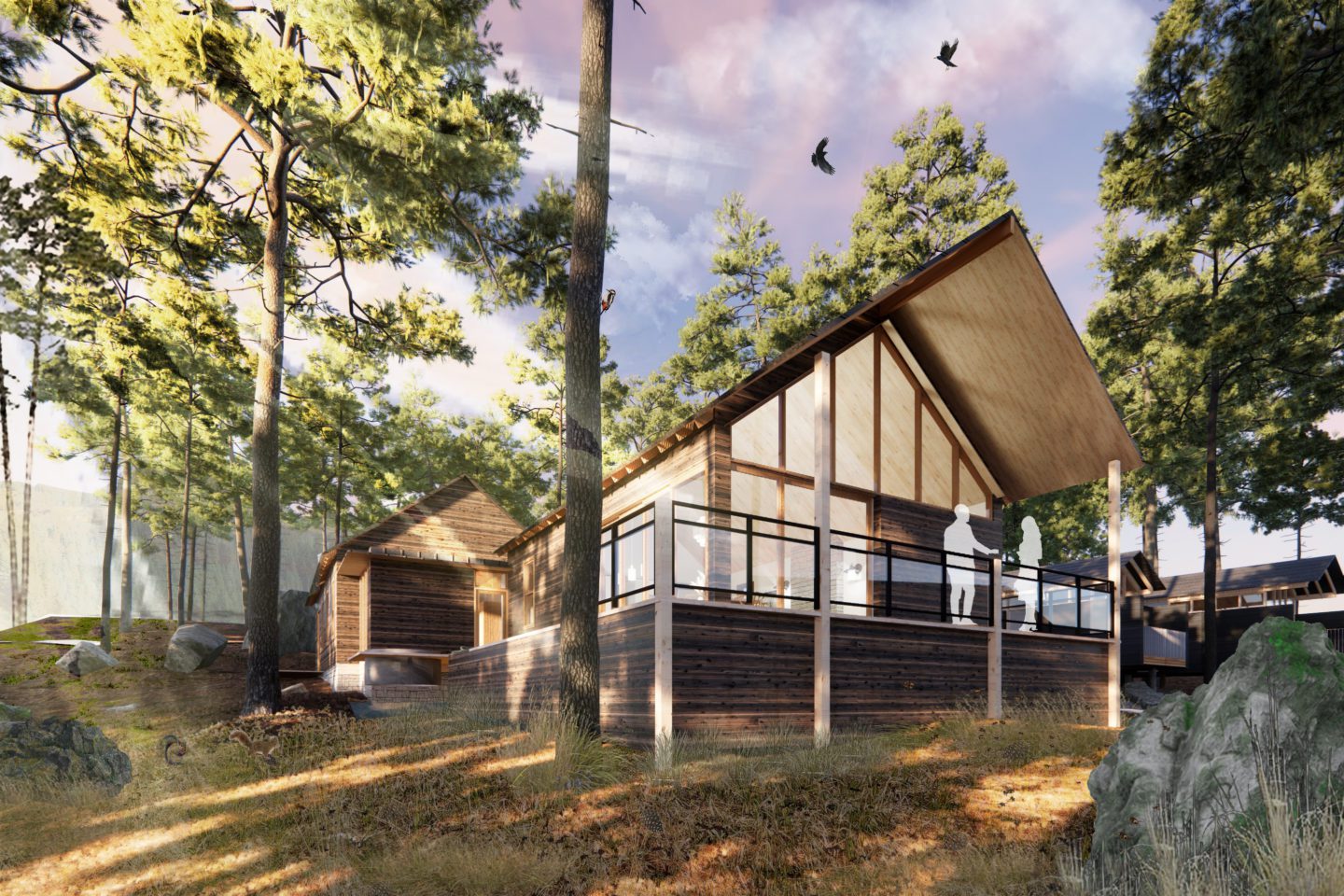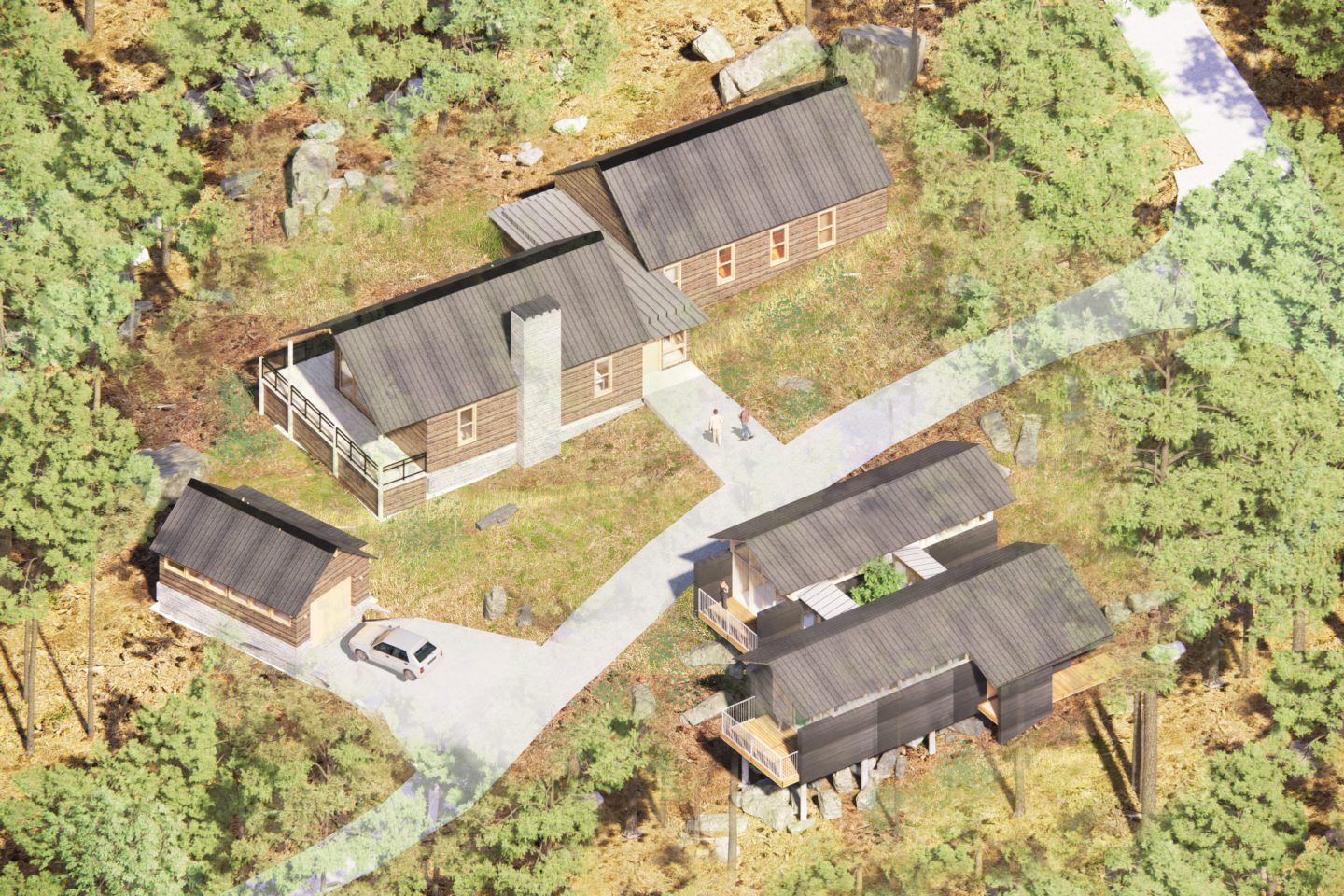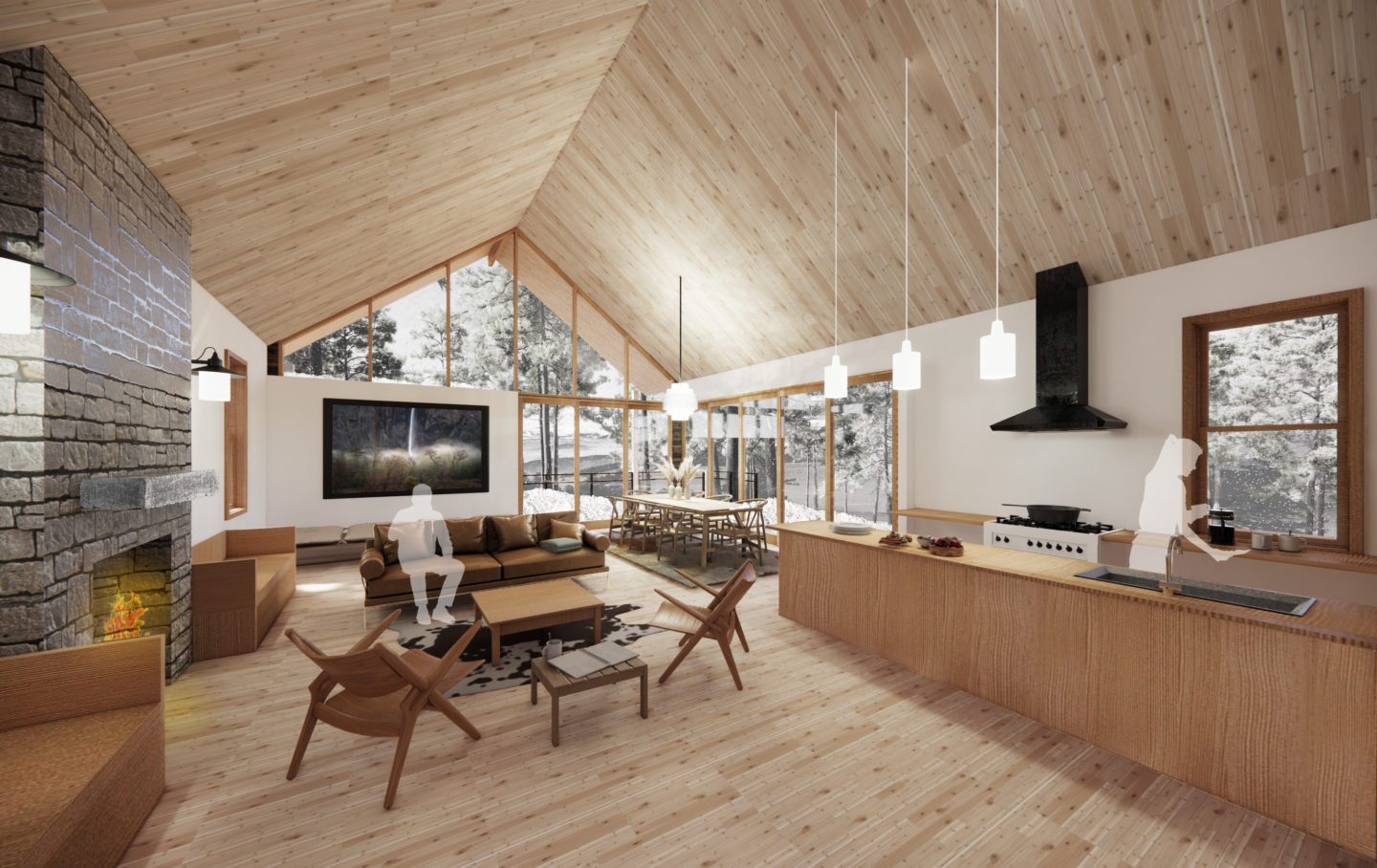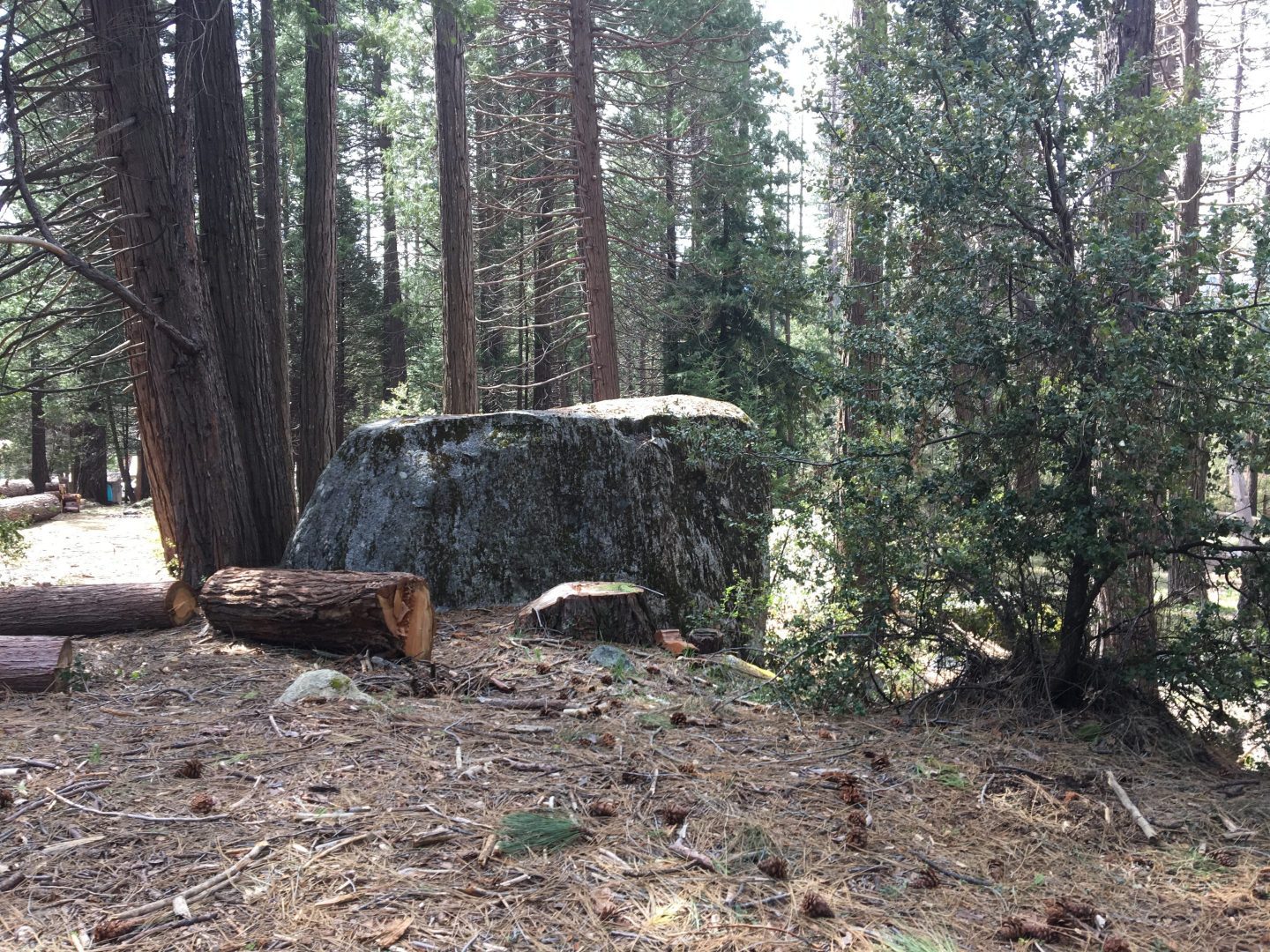Retreat Case Study: A Place at Home in the Woods
Retreat Case Study
Designing a beautiful home in a beautiful place might seem easy, at first glance. But we have all been in places that seem out-of-place, in homes that don’t seem to quite fit the place or the people in them. Our goal is to use design as an opportunity to connect people to place by creating an atmosphere of belonging. A case study of our approach is a home envisioned as a retreat for a landscape photographer and her family, situated in Yosemite National Park.
At the start of the design process, we discussed the family’s stories, their visions for the future, and what the site means to them. The client has spent decades capturing the beauty of Yosemite, so a sensitivity to the landscape, light, and nature was our starting place–existing trees offered an opportunity to break the retreat into two volumes, connected by glass bridges that preserve root systems and allow for water to pass below the structure. Cedar trees removed from a nearby site were milled and applied to the walls and ceilings, a modern play on the humble cabins in the woods. This building sits lightly on the land and intends to use resources from the site as wisely as possible.
A small kitchen serves the family and can become the backbone of gatherings that spill out through the vaulted living room and onto the covered deck. A small bunk room and a primary suite provide comfort for extended family and guests and intimate nooks provide comfortable places to read, rest, and soak in the golden light of Yosemite.
The home is located in Wawona–a large, mid-elevation basin that was added to Yosemite National Park in 1932. The area is protected from wildfires by controlled burns that happen annually, and area cleanups that happen bi-annually, where downed branches and other flammable debris are gathered and removed.
On the site itself, design can also support fire safety–our approach works its way from the outside in. To start, our solution includes a gravel band around the buildings, which reduces the opportunity for embers to rest against the buildings. To the fire-resistant shou sugi ban siding, we added an extra layer of protection in the form of a gypsum barrier; this shields the interior from heat should the home be close to a fire. The decks are wrapped in non-combustible grating which keeps the embers from blowing underneath and igniting them. All venting in the building is fire-resistant and the interior of the house has a full sprinkler system.
The materials of the original cedar and stone Yosemite cabins inspired the timeless shape and character of this new home. The landscape obscures the property from the main road, with the decks and paths wrapping around lichen-covered boulders, blurring the lines between built and natural, home and forest. The home offers a polished, thoughtful answer to the question: What can this place come to mean to us over time?
Read on:
Space for a Home: Site Selection
Designing for Wildfires: The Importance of Your Neighbors, Sustainability, and Material Selection



